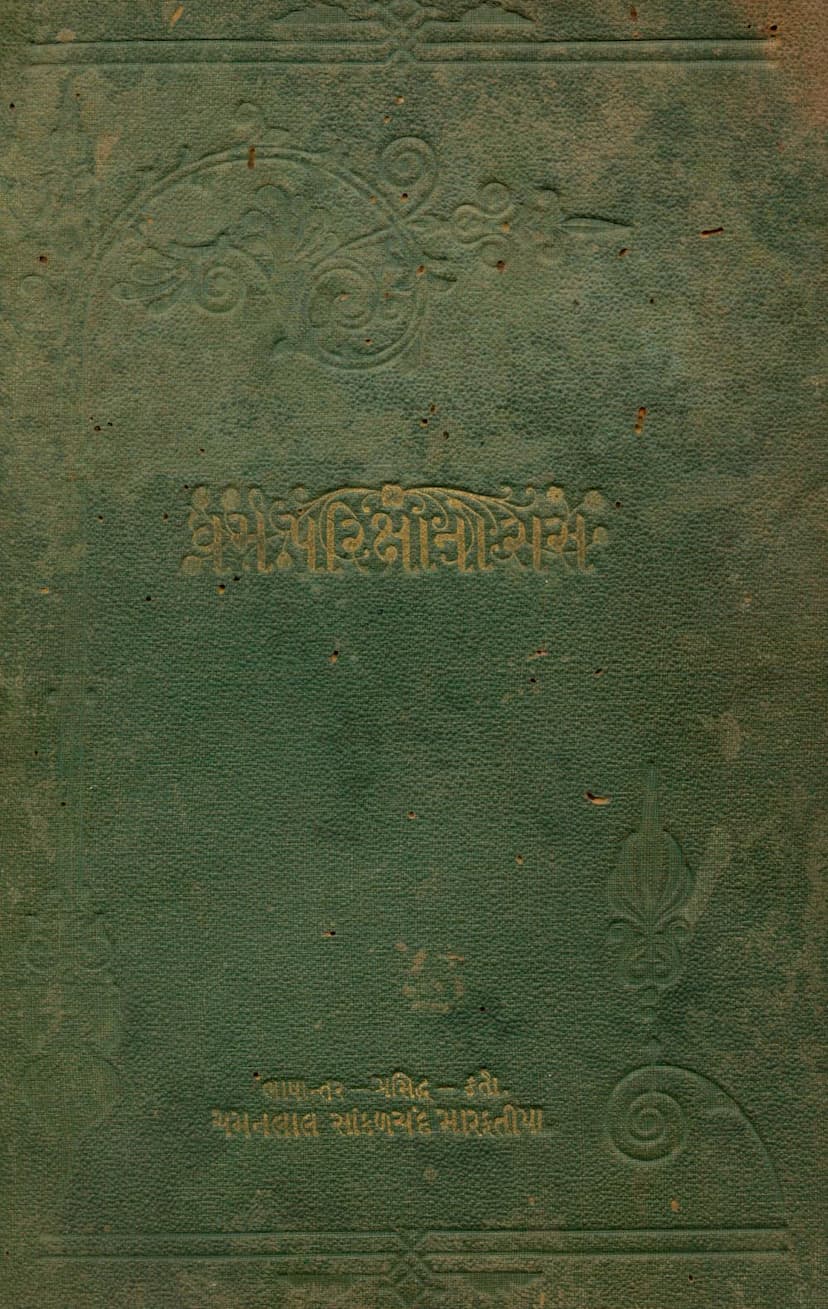Dharm Parikshano Ras
Added to library: September 1, 2025

Summary
Here's a comprehensive summary of the Jain text "Dharm Parikshano Ras," based on the provided pages:
Title: Dharm Parikshano Ras (A Discourse/Song on the Examination of Dharma) Author: Nemvijay Commentary/Translation: Muni Maharaj Shri Shri Shri 108 Shri Mohan Lalji Publisher: Chamanlal Sankalchand Marfatiya Publication Date: Samvat 1153 (1897 AD) First Edition: Published in Mumbai
Core Purpose and Theme:
The book is a Jaina text that aims to "examine" and differentiate true Dharma from various false or mistaken religious paths prevalent in the world. It emphasizes that while the ultimate goal of life is liberation (Moksha), this can only be achieved by following the path of Dharma. However, due to the multiplicity of paths claiming to be "Dharma," it stresses the importance of critical evaluation, advising readers to discern the true teachings of the omniscient (Sarvajña) Jain Tirthankaras from other doctrines.
Key Arguments and Content:
-
The Importance of True Dharma: The text begins by acknowledging the existence of numerous paths claiming to be "Dharma" in the world. It asserts that merely following a path by name is insufficient for achieving liberation. One must investigate whether the path aligns with reason, ethics, and the true principles of universal welfare.
-
Critique of Other Religions/Philosophies: The "Dharm Pariksha" aspect is central. The text, primarily through the dialogues and narratives within the Ras, contrasts Jain principles with the doctrines and stories found in other religious texts (like Puranas, Vedas, etc.). It aims to expose what it considers to be illogical, unethical, or contradictory elements in these other traditions.
-
The Narrative Framework: The Ras is structured around a narrative involving Manoveg and Pavanveg.
- Manoveg: A virtuous and perceptive prince, knowledgeable about Jain Dharma.
- Pavanveg: A prince influenced by heterodox (Mithyātva) views, who is persuaded by Manoveg to learn about true Dharma.
- The Setting: The story often unfolds in various locations, including the city of Pataliputra, where Manoveg engages in debates and discussions with scholars and religious figures of other faiths, particularly Brahmins.
-
Debate and Refutation: A significant portion of the text involves Manoveg engaging in logical arguments and using illustrations derived from other scriptures to demonstrate the superiority and truthfulness of Jain Dharma. The author (Nemvijay) and the commentator (Muniraj Mohanlalji) use these narratives to highlight the flaws and contradictions in other religious beliefs and practices.
-
Key Themes Explored: The text delves into various topics, including:
- Critique of Deities: The book examines the characterizations and actions of deities described in other scriptures (like Brahma, Vishnu, Shiva, Indra, Ganesh, etc.) and contrasts them with the pure and liberated beings (Siddhas, Arhats) of Jainism. It often points out perceived immoral or illogical actions attributed to these deities in other traditions.
- Mythology and Cosmology: It discusses creation stories, the nature of gods, and various mythological narratives from other traditions, comparing and contrasting them with the Jain cosmological and philosophical framework.
- The Path to Liberation: The text implicitly and explicitly advocates for the Jain path, emphasizing principles like non-violence (Ahimsa), truthfulness, non-possessiveness (Aparigraha), and the importance of the teachings of the Tirthankaras.
- The Importance of Jina Dharma: The core message is that only the pure, omnisciently spoken Jain Dharma (Sarvajña Bhashit) is capable of leading one across the ocean of existence (Bhavatavi) to liberation.
-
Structure and Style: The book is a "Ras," which implies a poetic and narrative style, often in the form of songs or verses, making it accessible and engaging for a wider audience. The commentary by Muni Mohanlalji adds clarity and depth by explaining the meanings and context of the verses.
-
Purpose of Commentary: The commentary aims to make the original work of Nemvijay, which is rich in scriptural references and philosophical arguments, understandable to the lay reader. The commentator explicitly seeks forgiveness for any errors due to his limited knowledge and requests correction from scholars.
Overall Message:
"Dharm Parikshano Ras" serves as a comprehensive defense and elucidation of Jain Dharma. It encourages seekers of truth to critically examine all religious paths, understand the logical and ethical foundations of Jainism, and ultimately embrace the path that leads to true liberation, free from worldly suffering. It highlights the perceived inconsistencies and flaws in other traditions while upholding the purity and efficacy of the Jain path.